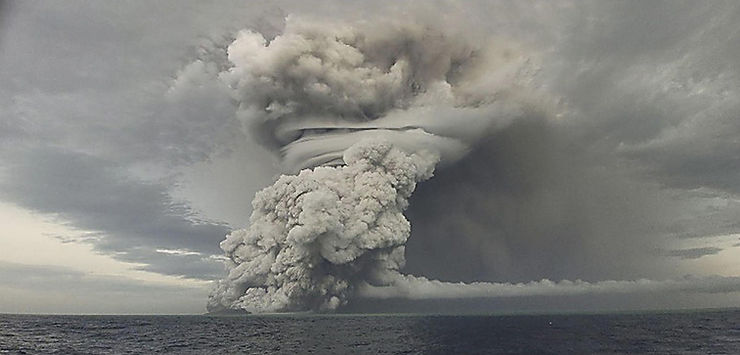By: Eric Jia
In 2022, an underwater volcano in the South Pacific island nation of Tonga made history when it spewed a plume of ash and water high enough to touch space. It also launched a tsunami as tall as the Statue of Liberty. Now, scientists find that it triggered lightning at the highest altitudes ever seen. The eruption plume sparked lightning flashes that began 20 to 30 kilometers (about 12 to 19 miles) above sea level. That’s all the way up in the stratosphere — even higher than most airplanes fly.
Researchers shared these findings on June 28. To understand how this storm formed, we must first know how lightning is created. While lightning is most often born inside storm clouds it can also form inside a volcano’s eruption plume. That plume is made of tiny bits of ash, gas, and dust. When these tiny bits touch each other, they make static electricity which is the imbalance of electrons on a surface. Once enough static electricity builds up, lightning shoots through the dusty cloud.
Alexa Van Eaton led a team that looked at how high the Tonga eruption’s lightning was. To estimate the lightning’s height, Van Eaton’s team looked at a few different types of data. One was radio waves created by the lightning. They also examined satellite images of the eruption plume and infrared light from the flashes.
This data revealed the lightning started more than 20 kilometers (12 miles) above sea level. Lightning doesn’t typically start that high. Air pressure at that height is usually too low to form lightning “leaders.” These are the channels of hot plasma that make up the lightning in thunderstorms.
The rising eruption plume may have increased the air pressure over the volcano, says Van Eaton. That might have been enough to create lightning leaders at strangely high altitudes.
In this eruption data, “we’re seeing stuff that we’ve never seen before,” says Jeff Lapierre, coauthor on the study and principal lightning scientist at Advanced Environmental Monitoring in Germantown, Maryland. This eruption has “completely changed the way we think of how natural events can change the atmosphere,” Lapierre says.











